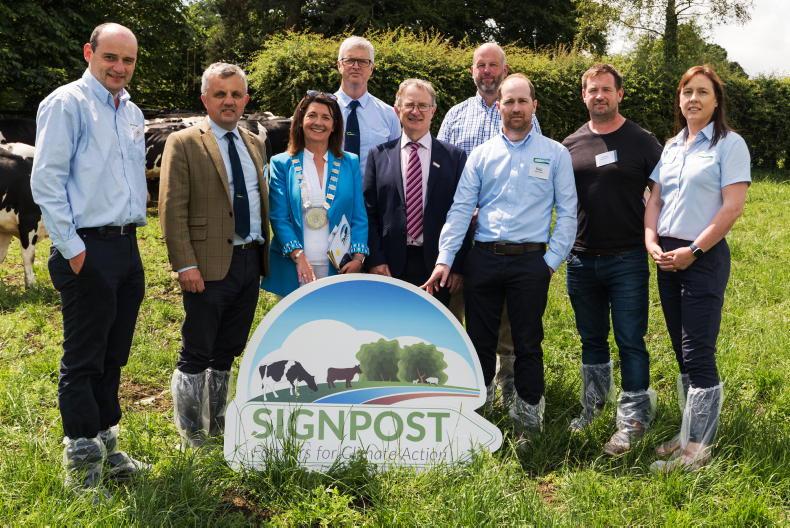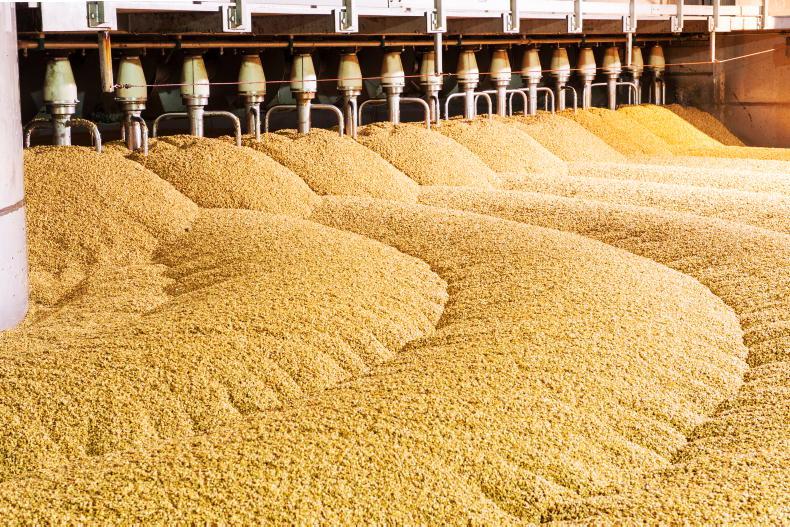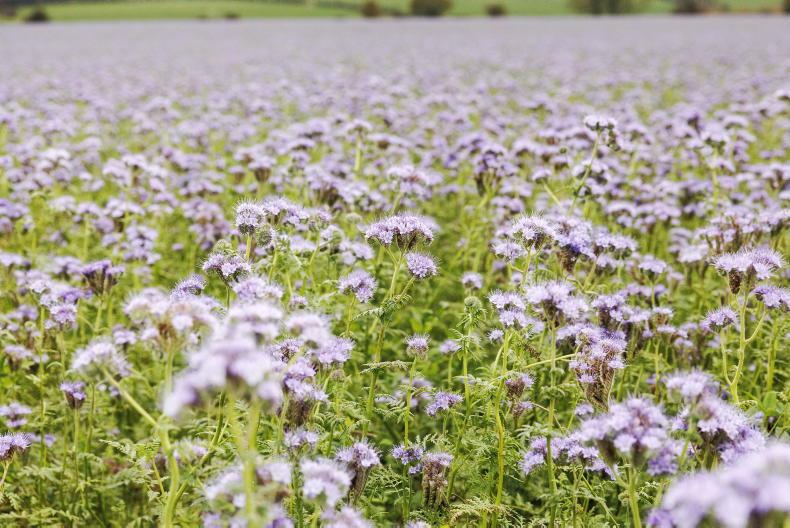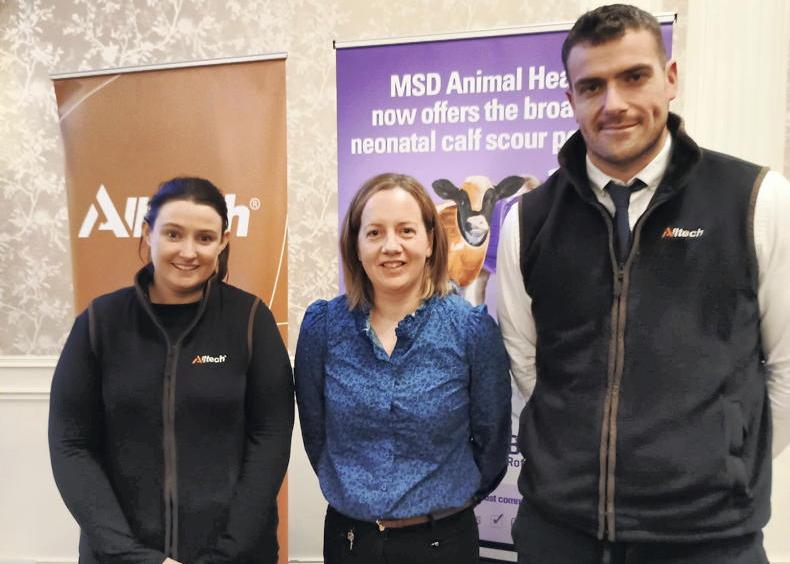Over the past few weeks, we have received detailed results from the soil carbon tests taken on the Footprint Farmers programme farms. There was huge variability in the 208 samples taken.
The lowest level of carbon was 21.9t/ha and the highest was 313.9t/ha across the farms. We now have a baseline of soil carbon levels across the farms and sampling will be carried out again in three years to see if soil carbon levels have increased.
If levels do increase, that means that carbon was taken from the atmosphere and stored in the soil. This means that emissions from the farm are being offset by storing carbon on the farm.
At present, there is no reward or acknowledgement for this carbon storage
In some countries, farmers are able to trade carbon and make money from the carbon they store. However, in Ireland, the carbon stored in agriculture and forestry is accounted for in the national inventory of greenhouse gas emissions.
If there was some way of rewarding farmers for storing carbon, whether that be a Government scheme or the ability to trade carbon in a market which gives the full value of that carbon, this would encourage farmers to store even more carbon.
At the open day on Tullamore Farm, attendees were interested in soil carbon and how it could improve their soil health, offset their emissions and possibly provide another income stream. Farmers are ready to move on this. However, at present, there is no reward or acknowledgement for this carbon storage. An incentive could drive farmers to store as much carbon as possible in their land, trees and hedgerows.
Carbon build-up
If farmers do get paid to store carbon by selling carbon credits, then they will not be paid on carbon already in their soil. They will be paid on an increase in carbon in their soil. This means these samples will need to be taken every few years.
Carbon build-up is not simple
Building soil carbon levels is not easy. It is a slow process. It could take 40 years to build soil carbon by 2%.
Soil carbon levels have been sampled at Solohead Research Farm in Co Tipperary for the past 20 years and they have not changed.
The dairy farm focuses on growing clover and efficient use of organic manures. However, in order to have good clover levels, reseeding and drainage is needed and both of these practices can release carbon.
That said, soils coming from a low base of carbon could see soil carbon levels increase very quickly.
How can we increase soil carbon levels?
Applying organic manures.Increase soil diversity – multispecies swards, cover crops.Growing cover crops.Increasing clover levels.Incorporate straw.Using reduced tillage practices.Grazing animals.Carbon pricing
Carbon price on the European Emissions Trading System has been running at around €85/t in the past few weeks.
Good for the environment
Carbon is stored in the soil when crops take in carbon from the atmosphere. This helps to reduce the levels of carbon in the atmosphere and thus helps to offset emissions produced on farms. Carbon dioxide and other greenhouse gases can contribute to global warming, so reducing their levels in the atmosphere is essential.
Over the past few weeks, we have received detailed results from the soil carbon tests taken on the Footprint Farmers programme farms. There was huge variability in the 208 samples taken.
The lowest level of carbon was 21.9t/ha and the highest was 313.9t/ha across the farms. We now have a baseline of soil carbon levels across the farms and sampling will be carried out again in three years to see if soil carbon levels have increased.
If levels do increase, that means that carbon was taken from the atmosphere and stored in the soil. This means that emissions from the farm are being offset by storing carbon on the farm.
At present, there is no reward or acknowledgement for this carbon storage
In some countries, farmers are able to trade carbon and make money from the carbon they store. However, in Ireland, the carbon stored in agriculture and forestry is accounted for in the national inventory of greenhouse gas emissions.
If there was some way of rewarding farmers for storing carbon, whether that be a Government scheme or the ability to trade carbon in a market which gives the full value of that carbon, this would encourage farmers to store even more carbon.
At the open day on Tullamore Farm, attendees were interested in soil carbon and how it could improve their soil health, offset their emissions and possibly provide another income stream. Farmers are ready to move on this. However, at present, there is no reward or acknowledgement for this carbon storage. An incentive could drive farmers to store as much carbon as possible in their land, trees and hedgerows.
Carbon build-up
If farmers do get paid to store carbon by selling carbon credits, then they will not be paid on carbon already in their soil. They will be paid on an increase in carbon in their soil. This means these samples will need to be taken every few years.
Carbon build-up is not simple
Building soil carbon levels is not easy. It is a slow process. It could take 40 years to build soil carbon by 2%.
Soil carbon levels have been sampled at Solohead Research Farm in Co Tipperary for the past 20 years and they have not changed.
The dairy farm focuses on growing clover and efficient use of organic manures. However, in order to have good clover levels, reseeding and drainage is needed and both of these practices can release carbon.
That said, soils coming from a low base of carbon could see soil carbon levels increase very quickly.
How can we increase soil carbon levels?
Applying organic manures.Increase soil diversity – multispecies swards, cover crops.Growing cover crops.Increasing clover levels.Incorporate straw.Using reduced tillage practices.Grazing animals.Carbon pricing
Carbon price on the European Emissions Trading System has been running at around €85/t in the past few weeks.
Good for the environment
Carbon is stored in the soil when crops take in carbon from the atmosphere. This helps to reduce the levels of carbon in the atmosphere and thus helps to offset emissions produced on farms. Carbon dioxide and other greenhouse gases can contribute to global warming, so reducing their levels in the atmosphere is essential.










SHARING OPTIONS